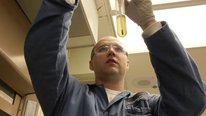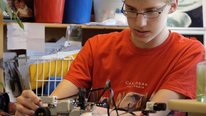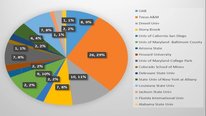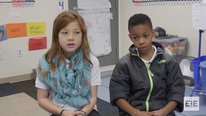- Jidong Huang
- Engineering Professor
- Science, Technology and Engineering Mini-business Incubator
- California State University Fullerton
- John B. Jackson
- Business Professor
- Science, Technology and Engineering Mini-business Incubator
- California State University Fullerton
- Amerika Bernal
- http://www.amerikabernal.com/
- Business Mentor
- Science, Technology and Engineering Mini-business Incubator
- California State University Fullerton
- Kim Case
- Education Professor
- Science, Technology and Engineering Mini-business Incubator
- California State University Fullerton
- Amy Cox-Petersen
- Education Professor
- Science, Technology and Engineering Mini-business Incubator
- California State University Fullerton
- Clay Elliott
- Science Curriculum Specialist
- Science, Technology and Engineering Mini-business Incubator
- Anaheim Union High School District
- Pradeep Nair
- Engineering Professor
- Science, Technology and Engineering Mini-business Incubator
- California State University Fullerton
Public Discussion
Continue the discussion of this presentation on the Multiplex. Go to Multiplex













Vivian Guilfoy
Senior Advisor
It’s great to see the enthusiasm of the students in the video as they work on projects—and the video generated several questions for me. For example, the captions indicated some sophisticated problems they were working on and could you say a bit more about how students developed these particular issues? Also, I’m not sure what stage of the project you are in, but have any of the ideas “matured” enough to generate a prototype product? Do students have an opportunity to “pitch” their ideas to business entrepreneurs to get feedback along the way? Also, You mention formative evaluation to identify aspects of the design that are working well—do you have any data to give an indication of such aspects? And, How do train teachers and mentors to harness the energy of and guide these young people in their quest to find engineering solutions?
Jidong Huang
Engineering Professor
Sorry for the delayed response. I just had several trips recently. Thanks a lot for your thoughtful comments and questions. The objective of the STEM Inc. program is to bring awareness to students on problems that exist in real-world; and help students generate and test ideas that may solve real-world problems through an integrated approach involving both engineering and business practices. With the effort made to push humanity forward, students participated in several brainstorming activities and conducted interviews to truly understand what problems exist today in real-world. Students, with the help of their mentors, narrowed down the problems they discovered and worked on the one they were most passionate about. After students conducted interviews, and decided what problem they wanted to tackle, they then entered the prototype phase. In the prototype phase, many student teams were actually able to create a functioning product. For example, we had one team, that took their App product and entered the 2015 Congressional App Design Competition and received recognition for their efforts to help students diagnosed with Autism Spectrum Disorder, gain independence. Currently, we are in year 2 of the 3-year project. At this stage, students did not have the opportunity to pitch their ideas to real entrepreneurs. With the help of their mentors, they learned how to develop a 60 second pitch and from there we had students pitch to the “sharks” which consisted of teachers, mentors and peers. After pitching in the classroom, the winner from each school then moved on to the end-of-the-year showcase; and pitch their products to an audience of about 200 people consisting of parents, teachers and community members! In year 3 of our program, we do plan to reach out to actual business owners to help in the critique of the projects. We actually have industry advisors for the program; and we may possibly rely on them to help us form a judging panel for the student pitches. Our formative evaluations focus on student’s satisfaction on project progress throughout the year. We do have data showing both positive and non-positive observations. For example, almost all students liked field trips which we arranged for them to visit university engineering labs, engineering companies, and science centers. These field trip activities definitely reinforced students’ interests towards STEM careers. For another example, we saw in the data, students have high ratings for their mentors, and they believe good supports from the mentors help maintain their interests in STEM, thus can better help them gain required skills in STEM fields. For training teachers/mentors, we have summer academies covering contents in engineering and business as well as STEM-related pedagogies. In addition, we have meetings with teachers and mentors to go through project implementation issues on regular basis. Our main idea conveying to the teachers and mentors is that they are facilitators helping students to learn; and we are trying to create a student-centered informal learning environment. Mentors and teachers may teach contents from time to time. But more importantly, mentors and teachers are there to encourage students better understand themselves and naturally develop an interest towards STEM through integrated activities.
Tamara Ball
Asst. Project Scientist
The impetus to “mirror” what’s happening in the real world seems compelling for learners – but can get complicated quickly. My assumption is that some of the success of this program can be traced to the structure and supports that help learners navigate the sticky places. Can you tell us more about what is working and what is not working well as far as helping learners navigate the uncertainties that come along with participating in authentic entrepreneurship?
Jidong Huang
Engineering Professor
The STEM Inc. program tries to mirror the real world by having students tackle real world problems and by having them understand what it is like to work with people that have different skill sets. Students formed teams and delegated roles such as CEO, CFO, CTO, COO and engineers. On the entrepreneurship side we had students understand the importance of learning from failure, adopting a business savvy attitude and having confidence in themselves to voice their ideas. In year one of the program, we found that students appreciate and understand the importance of having an entrepreneur like attitude. The program sets out to create interest in the area of STEM, and educate our youth on the countless number of possibilities one has in pursuing a STEM related field, and having a business savvy attitude. Referring to what is working well, we had observations that the following is important for our project: using age-appropriate tools; providing proper guidance and mentoring; making connection with real-world experiences; learning by doing and knowing how to overcome failures; teamwork and timely communications; and all of the above work together to help learners navigate through the uncertainties.
Lisa Samford
Executive Director
How many classrooms/students are participating in this program? How have you approached educator engagement/training throughout the process? Once the project concludes, will the school have the resources to continue the program—it really looks fantastic!
Jidong Huang
Engineering Professor
We have 4 school sites at AUHSD participating in this project; and we enrolled approx. 40 students every year at each school site to take part in the project. The actual afterschool program meets twice a week, 2 hours each time; during which engineering, business mentors and teachers were there to help students learn. Educator’s training are done through summer training workshops; and regular meetings with PIs. The summer workshops focus on STEM and Business content training as well as STEM-related pedagogies at middle schools. The regular meetings focus on project implementation issues throughout the year. We use these meetings to make project plans, exchange thoughts like what worked and didn’t work among different school sites, and collaboratively look for solutions to challenges and issues that came up through project implementations. We do have a sustainability plan for the project. Firstly, all project supplies and materials we acquired will stay at the schools. Secondly, the engineering/business after-school curriculum we developed will be shared with the school district. Lastly, and most importantly, teachers have been participating in the day-to-day running of the program. We are hoping these teacher participants can take over the project, maybe not everything, but at least those key components, when we leave.
Vivian Guilfoy
Senior Advisor
Could you say more about the role and training of the peer leaders?
Jidong Huang
Engineering Professor
Our efforts to create interest in STEM at the middle school level utilized both college mentors and middle school peer leaders. At STEM-Inc, we offered multifaceted roles for college students as mentors and for selected students as peer leaders. The program utilized best practices in organizational leadership and leadership development to maximize the effectiveness. The peer leaders were encouraged to manage a team of fellow middle school students, acting as the CEO for the group. A day-long training program covering various topics in leadership and management skills helped the peer leaders prepare for their roles. In addition, continuous support was given to the peer leaders by the college mentors who helped proctor the training and mentor the peer leaders for managing their projects.
Further posting is closed as the showcase has ended.